Local Area Labour Markets in Scotland: Statistics from the Annual Population Survey, 2014
Summary publication of results from the Annual Population Survey 2014, presenting analysis on the labour market, education and training. Results are provided for Scotland and local authority areas in Scotland.
Section 2: People not in work
This section examines those who are not in employment; the unemployed and the economically inactive.
Figure 21 - Composition of those aged 16+ who were not in work, Scotland 2014
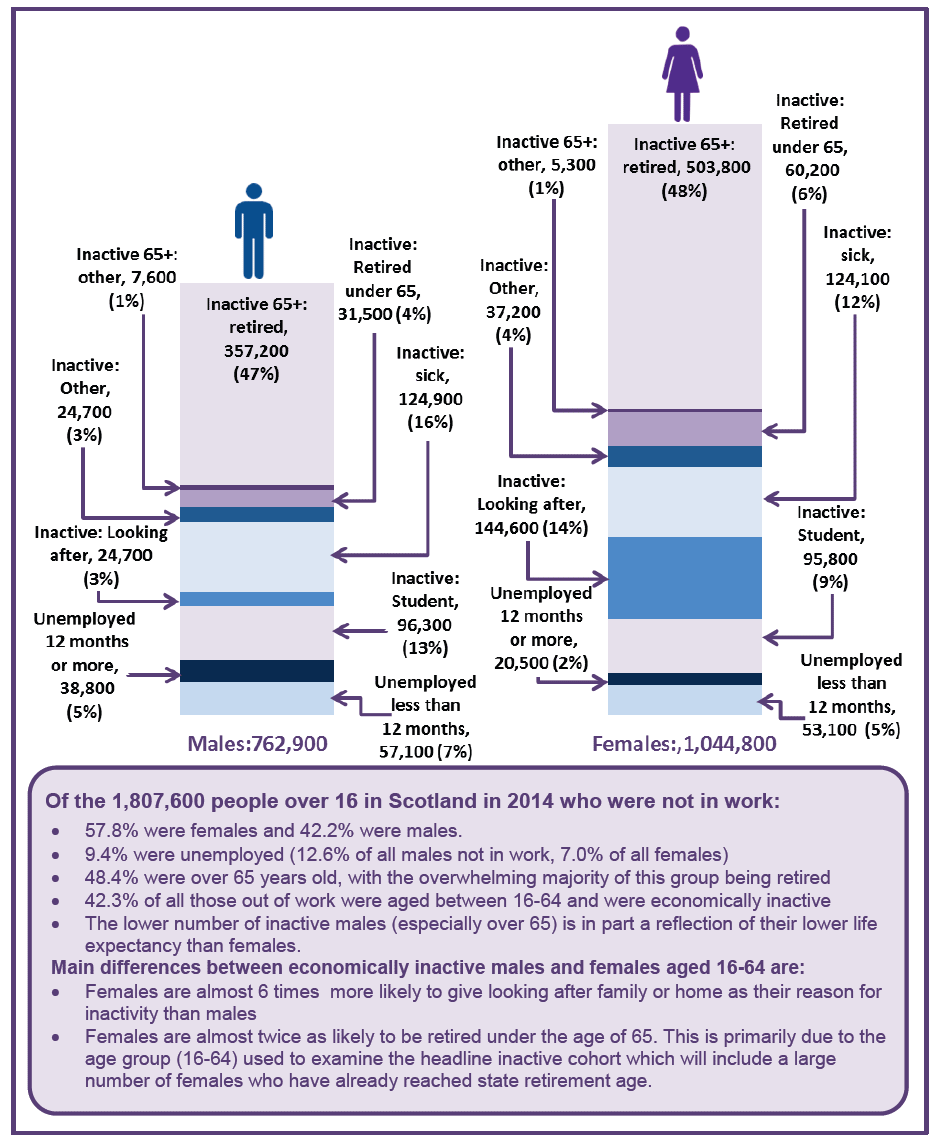
Source: Annual Population Survey, Jan-Dec 2014, ONS
Unemployment
Unemployment covers individuals who are not in work, but are available for and actively looking for work. The level of unemployment varies with the economic cycle. For example, when the economy is strong employers create more jobs and unemployment falls. Conversely when the economy is weak, there is a reduction in job opportunities and unemployment rises. Further information on the definition of unemployment is available in Annex E.
Based on the Annual Population Survey, in 2014, there were 169,500 people aged 16 or over who were unemployed in Scotland, a decrease of 39,900 since 2013. However, the level has increased by 39,400 since 2008.
Figure 22 - Unemployment rate (16+), Scotland and UK, change since 2008
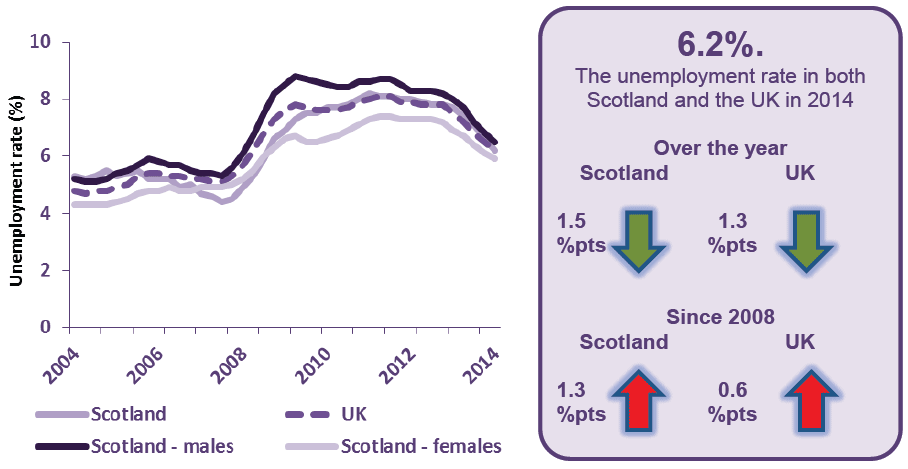
Source: Annual Population Survey, Jan-Dec 2014, ONS
Figure 23 - Unemployment rate by age group, Scotland, 2004 to 2014
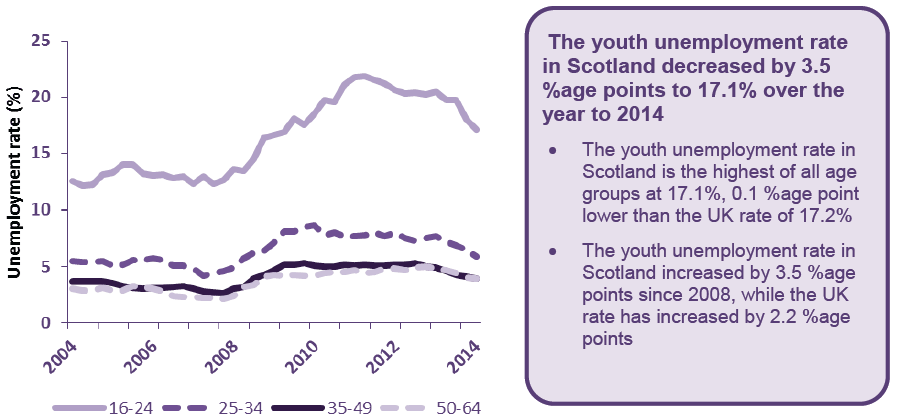
Source: Annual Population Survey, Jan-Dec 2014, ONS
Breakdowns for unemployment by age-group and gender are available in Table 2.1 of the web-tables.
Figure 24 - Duration of unemployment by age, Scotland 2014
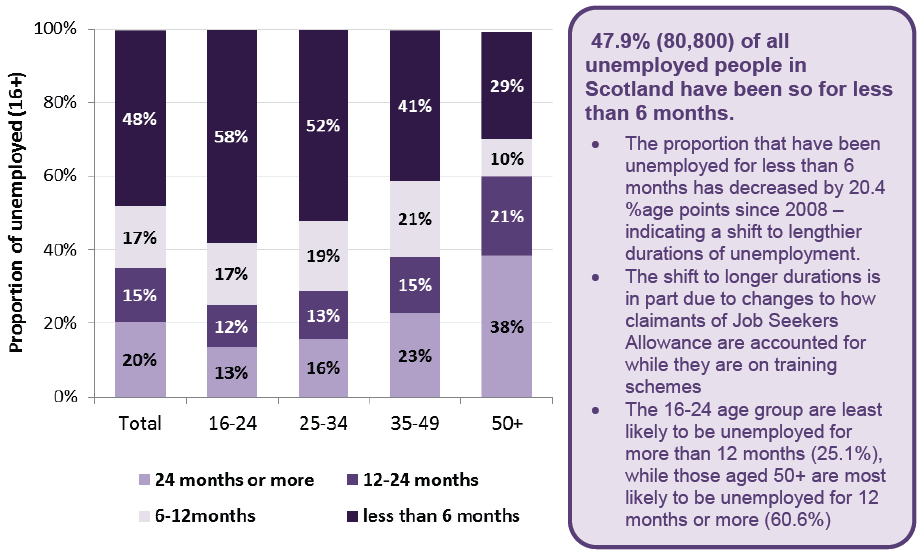
Source: Annual Population Survey, Jan-Dec 2014, ONS
Breakdowns of duration of unemployment by age-group and gender are available in Table 2.2 of the web-tables.
Unemployment at Local Authority level - Model Based Unemployment
The unemployed cohort is relatively small compared to the employed or inactive cohorts. Consequently, their sample sizes in ther APS are also fairly small and consequently can have large sampling variations. To improve the quality of estimates for all local authorities, the Office for National Statistics (ONS) developed model based estimates. Further information on how these estimates are derived is given in Annex E.
A full-time series of Model based unemployment estimates by local authority are available in Table 2.3 of the web-tables.
Figure 25 - Model Based Unemployment (MBU) across Local Authority areas in Scotland, 2014
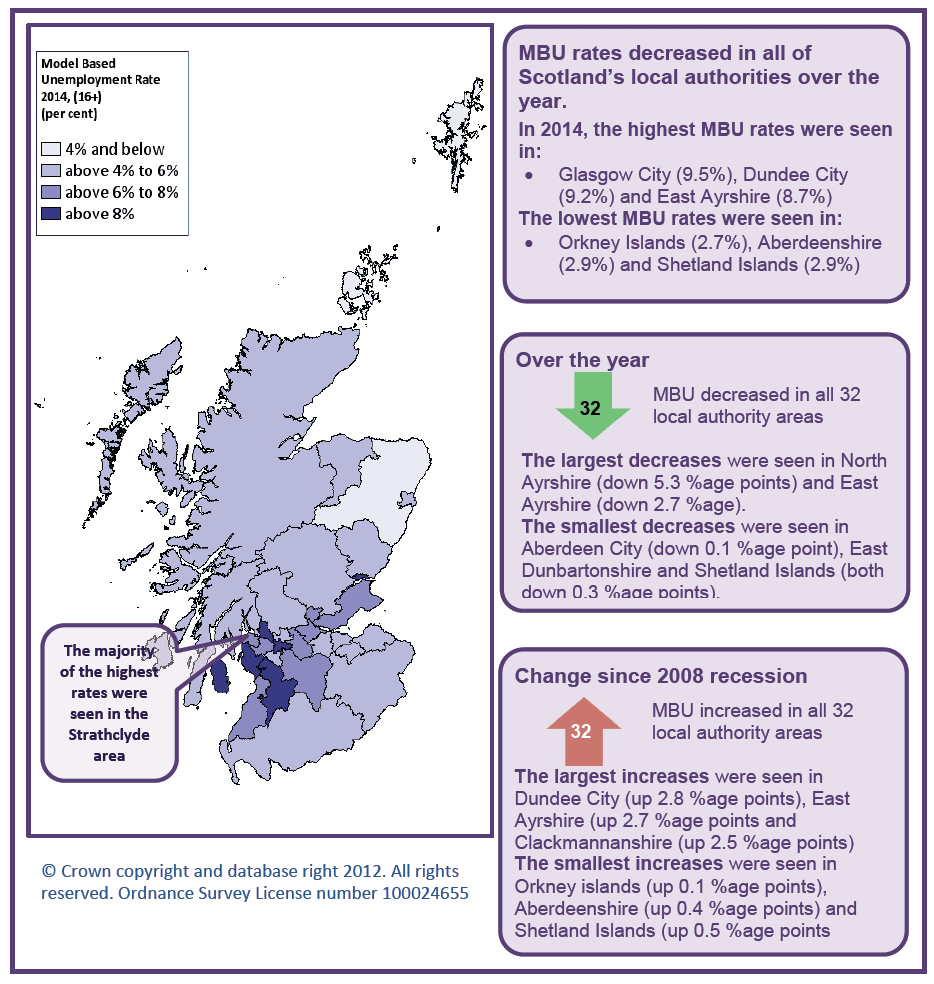
Source: Annual Population Survey, Jan-Dec 2014, ONS
16 to 19 year olds Not in Employment, Education or Training (NEET)
The 16-19 year old NEET group measures those 16 to 19 year olds not in employment, education or training, and therefore contains young people in both unemployment and economic activity.
Figure 26 - Percentage of 16-19 year olds NEET by gender, Scotland 2004 - 2014
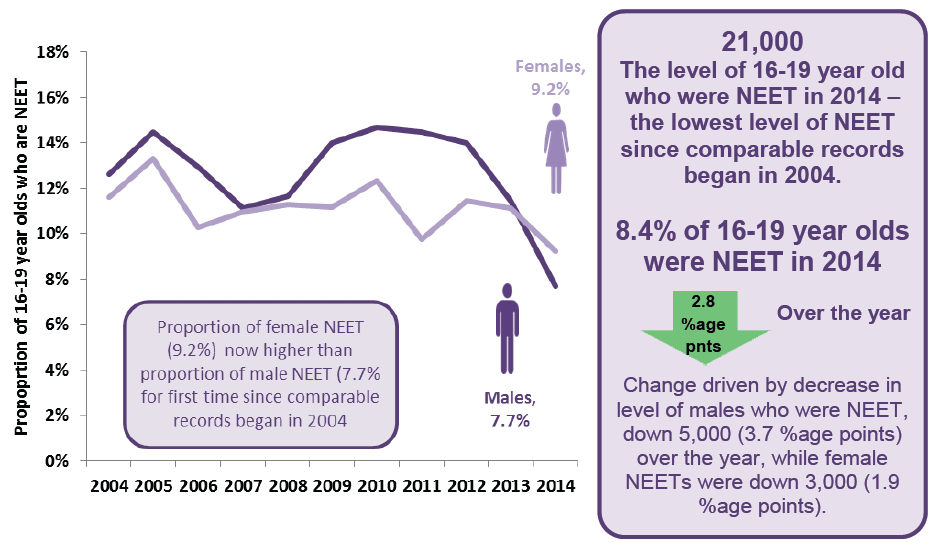
Source: Annual Population Survey, Jan-Dec 2014, ONS
Figure 27 - Percentage of 16-19 year olds NEET by age group, Scotland 2004 - 2014
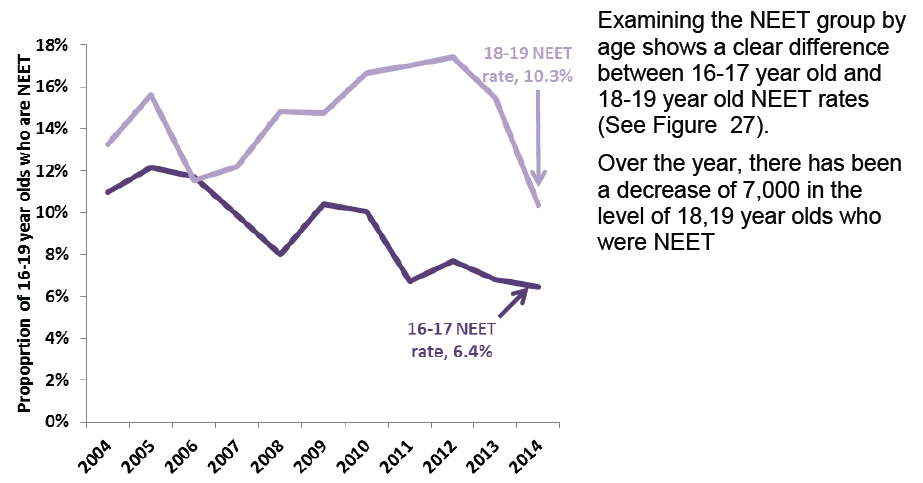
Source: Annual Population Survey, Jan-Dec 2014, ONS
Estimates for the 16-19 year old NEET group are based on small sample sizes. Figure 27 shows the 95% confidence intervals for the headline NEET rate
Figure 28 - Percentage of 16-19 year old NEET with 95% upper and lower confidence intervals (UCI and LCI)
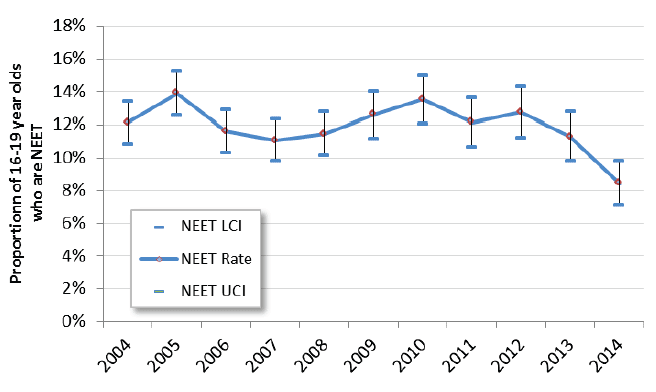
Based on the information in Chart 27, we can say that with 95% certainty that the headline 16-19 NEET rate will lie between 7.1% and 9.8%. This is statistically significantly different to the estimates in preceding years.
A full-time series of NEET estimates by gender (from 2004 to 2014) are available in Table 2.4 of the web-tables
Economic Inactivity
Economic inactivity covers individuals who are neither in employment nor unemployed. There are many reasons why people may be inactive. For example, they may have a long-term illness or disability, be studying for a qualification, staying at home to look after their family, or have retired. The economically inactive population are not part of the supply of labour. However, the labour market is dynamic, with people continuously moving between different categories. Therefore it is important to consider inactivity figures as they include those who may make up the labour supply in the future and those who were part of the labour supply in the past. Further information on the definition of economic inactivity available in Annex E.
Figure 29 - Economic Inactivity, Scotland and UK
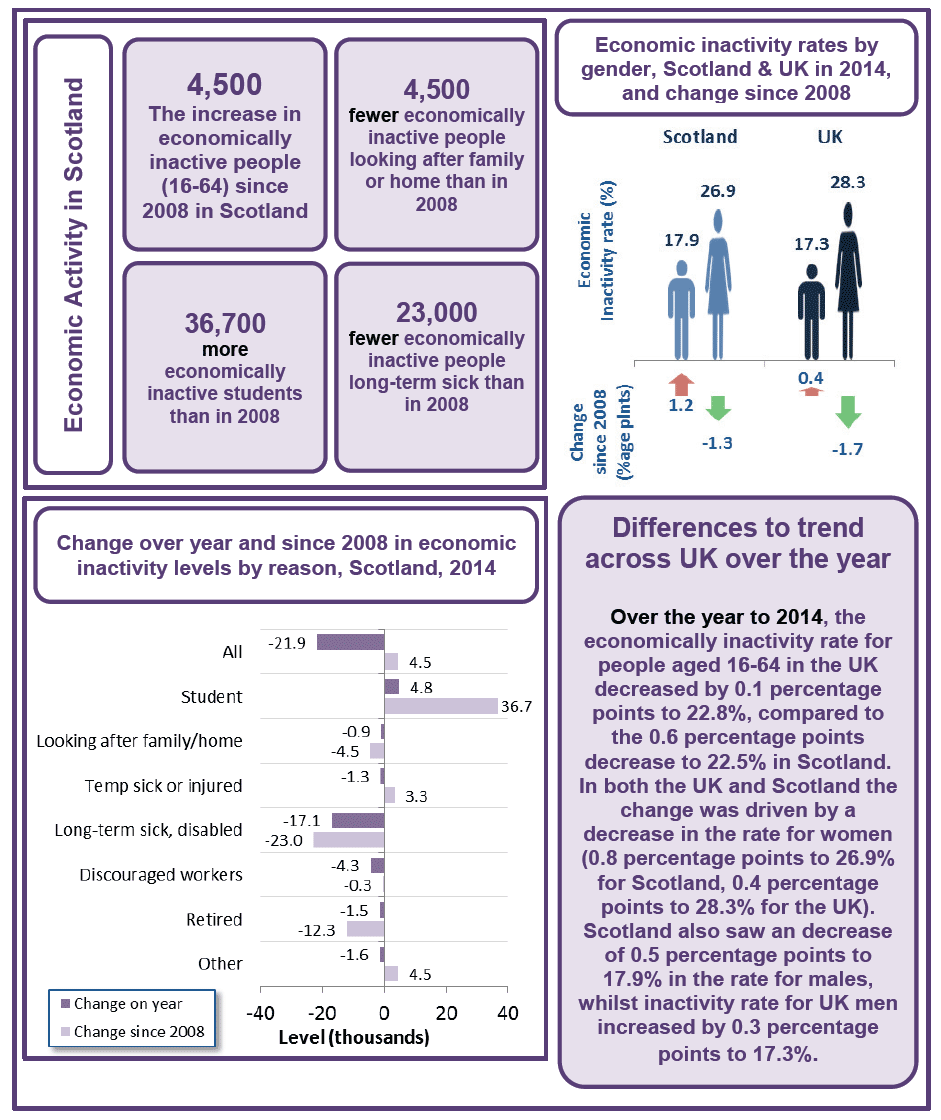
Source: Annual population Survey, Jan-Dec 2014, ONS
Since 2008, economic inactivity in Scotland has increase by 4,500, driven primarily by an increase in the number of inactive students (up 36,700), which has been offset somewhat by decreases in the number of those who are inactive because they were long term sick or disabled (down 23,000), those who were retired (down 12,300) and those looking after family of home (down 4,500).
Figure 30 - Economic Inactivity by Local Authority, 2014
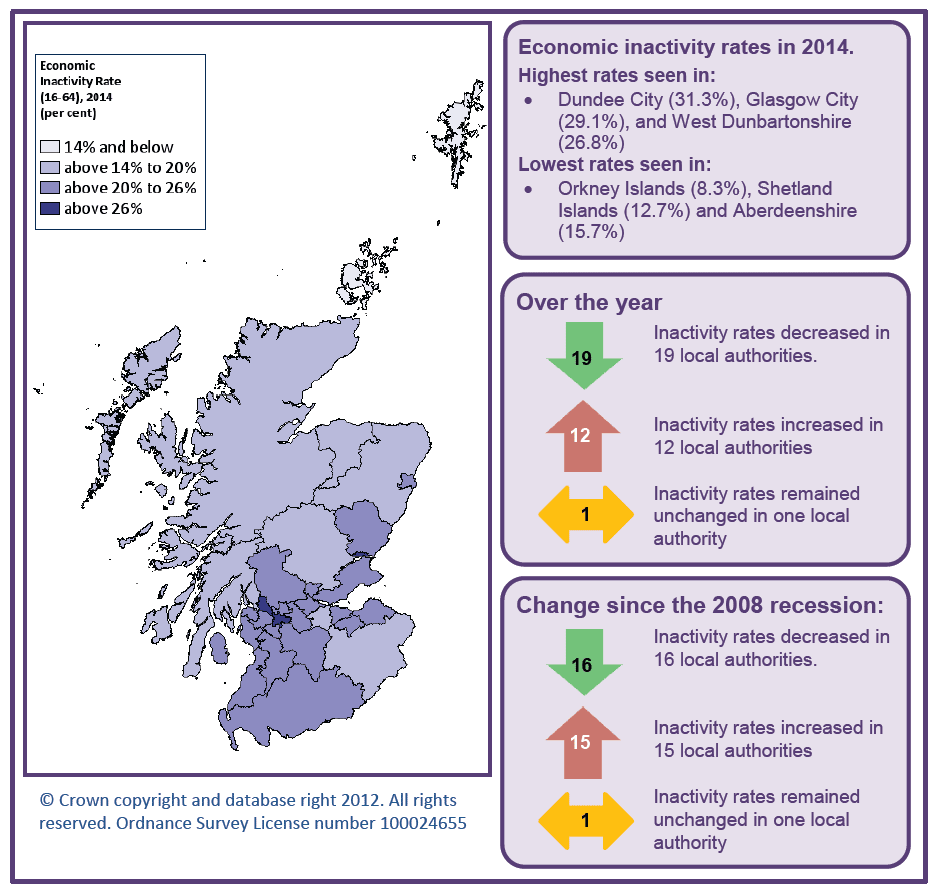
Source: Annual Population Survey, Jan-Dec 2014, ONS
A full-time series of economic inactivity estimates by gender, age and disability at local authority level is available in Tables 3.1 to 3.5 of the web-tables.
A full-time series of reasons for economic inactivity at local authority level is available in Table 3.6 of the web-tables.
Figure 31 - Proportion of economically inactive that want a job, Scotland, 2004-2014
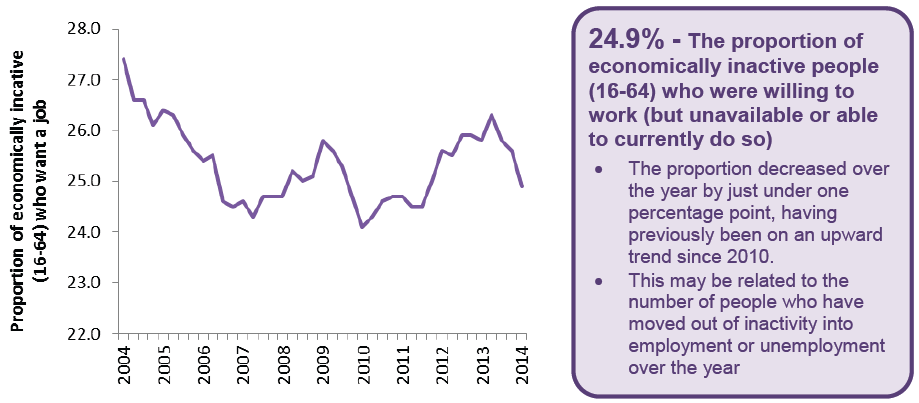
Source: Annual Population Survey, Jan-Dec 2014, ONS
A full-time series of the proportion of economic inactivity who are willing to work at local authority level is available in Table 3.7 of the web-tables.
Adults who have never worked
The APS asks those who did no paid or unpaid work if they have ever had a paid job or place on a government training scheme. As many younger people do not enter the labour market until after leaving full-time education, the chances of a person having ever worked[7] is highly dependent on their age. A full-time series of the number and proportion of those who have never worked by age and local authority level is available in Tables 3.8 and 3.9 of the web-tables
Figure 32 - Number of people aged 16 and over who have never worked, Scotland 2004-2014
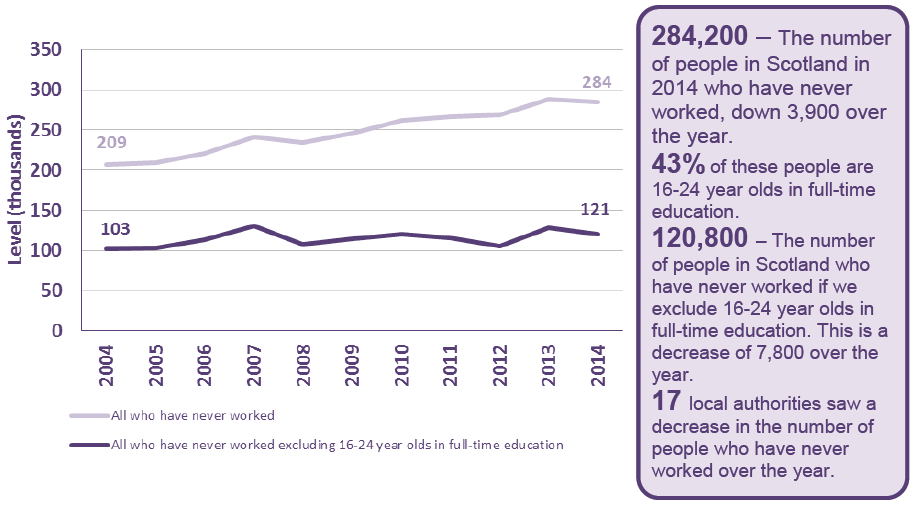
Source: Annual Population Survey, Jan-Dec 2014, ONS
Contact
Email: Alan Winetrobe
There is a problem
Thanks for your feedback